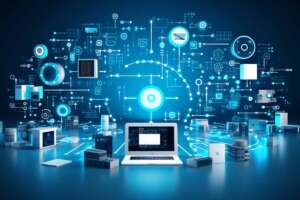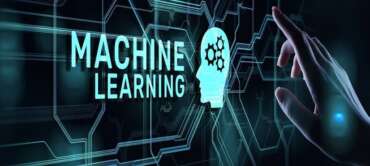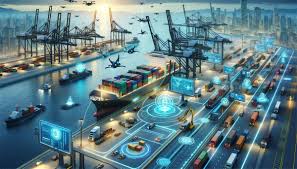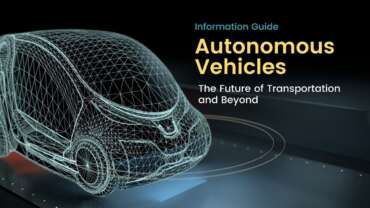
Today’s environment of rapid change has made computers and automation the foundation of almost every industry. Together, they will completely transform the way we work, live, and engage with our surroundings. Automation and computers have progressed to previously unthinkable levels, from automating sophisticated data analysis to simplifying manufacturing operations. This article dives deeply into the realm of automation and computers, examining their development, function in a variety of industries, influence on the world economy, and future possibilities.
1. The Development of Automation and Computers
1.1 The History of Computing
The Analytical Engine, developed by Charles Babbage in the early 1800s, is generally recognized as the earliest example of a programmable computer. The creation of electrical digital computers in the middle of the 20th century, however, marked the real breakthrough. Massive devices like the ENIAC (Electronic Numerical Integrator and Computer) were early models that could process data at previously unheard-of rates.
Computers became quicker, more powerful, and smaller as technology developed. A major advancement occurred in 1947 when Bell Laboratories invented the transistor, which allowed for more compact designs by eliminating the vacuum tubes used in earlier devices. As a result, the microprocessor was developed in the 1970s, marking a significant turning point that enabled personal computing.
1.2 Automation’s Ascent
Automation is not a novel idea; it is the use of technology to carry out tasks without the need for human interaction. Early automation dates back to the Industrial Revolution, when companies employed machines to replace labor-intensive manual labor. Henry Ford’s assembly line transformed manufacturing at the beginning of the 20th century by automating tedious activities and significantly increasing production efficiency.
Automation expanded along with the advancement of computers. Complex, computerized systems that could complete jobs more precisely and effectively replaced simple automated procedures. Computers are now the engine of automation in almost every industry, including finance, healthcare, shipping, and manufacturing.
2. Automation and Computers: A Mutually Beneficial Partnership
Automation and computers have a mutually beneficial relationship. Computers rely on automation to carry out preprogrammed activities, and automation depends on computers to expedite workflows and accomplish jobs more quickly and accurately.
2.1 Controllers using Programmable Logic (PLCs)
PLCs, or programmable logic controllers, are a great illustration of how computers and automation can collaborate in the manufacturing sector. PLCs are tough computers made for use in manufacturing settings. They automate tasks like material handling, assembly, and packaging and control machines. In order to regulate the output of machinery, a PLC continuously scans input devices such as switches and sensors and makes decisions based on logic that has been preprogrammed.
Over the years, PLCs have developed into more potent machines that can manage intricate tasks. In today’s manufacturing contexts, where they assist minimize errors and increase efficiency by reducing the need for human intervention, they are essential.
2.2 Automation and Robotics
Robotics is a significant advancement in the field of computers and automation. Robots can carry out a variety of jobs, from complex medical procedures to assembly-line labor, thanks to their advanced computer systems. Robots are frequently utilized in industrial settings to do repetitive or hazardous activities, which lowers the possibility of worker harm and increases total productivity.
The capabilities of robots have been significantly improved by the incorporation of artificial intelligence (AI) and machine learning. Robots have now brought in a new era of “smart” automation by being able to learn from their surroundings, adjust to changes, and make judgments instantly.
3. The Use of Automation and Computers in Various Industries
3.1 Production
Automation has ushered in the Fourth Industrial Revolution, or Industry 4.0, in production. Modern robotics, IoT (Internet of Things) gadgets, and networked machinery are making factories “smart”. Automated systems take care of everything, including quality control and inventory management, which speeds up production and reduces expenses.
As an illustration, Tesla’s Gigafactories mostly rely on automation, with robots handling a sizable portion of the work required to assemble electric cars. Large-scale production becomes more possible as a result of the decrease in human error, increased production speed, and cost savings.
3.2 Medical
Automation and technology have revolutionized healthcare, improving everything from diagnosis to therapy. More accurately than humans, automated diagnostic systems can evaluate medical pictures like CT and MRI scans. This lowers diagnostic error rates and aids in early problem detection by doctors.
Surgeons may now precisely perform minimally invasive surgeries that would be difficult to accomplish with the human hand alone thanks to surgical robots like the Da Vinci system. Automation also helps lessen the administrative load on medical staff, freeing them up to concentrate more on patient care. Examples of this automation in hospital administration include patient data management and billing.
3.3 Money
Operations in the finance sector have been considerably simplified by automation. Thanks to high-frequency trading and sophisticated algorithms, computers can execute deals much faster than a person could—in microseconds. Furthermore, automation has made it feasible to handle account administration, payments, and loan processing duties effectively and without the need for human participation.
In the financial industry, automated fraud detection technologies have grown in significance. These technologies lower the risk of financial fraud by analyzing transaction patterns and flagging questionable activity instantly using machine learning algorithms.
3.4 Farming
The concept of “smart farming” in agriculture is being driven by computers and automation. For example, automated irrigation systems have the ability to track soil moisture and meteorological conditions and modify water usage in real time. Precision agriculture, pesticide application, and crop harvesting are all made possible by automated machinery and drones, which also minimize waste and maximize resource use.
With the help of sophisticated GPS and AI systems, autonomous tractors are able to operate with very little human input, precisely plowing fields and planting crops. Farmers are able to more effectively manage bigger land areas and labor costs are decreased as a result.
4. How Automation and Computers Affect the World Economy
4.1 Enhanced Efficiency and Productivity
Productivity growth is one of automation’s most important effects. Businesses may create goods and services significantly more swiftly thanks to automated systems’ superior speed at which they can do repetitive operations compared to humans. Automation has significantly lowered operating costs and production times in sectors like manufacturing and logistics.
For instance, Amazon’s employment of robots in its warehouses has reduced costs and expedited shipping times by enabling the corporation to handle a higher volume of orders with fewer personnel. This effectiveness has played a major role in Amazon’s eCommerce domination worldwide.
4.2 Job Loss and the Adapting Labor Market
Automation has increased production significantly, but it has also sparked worries about job displacement. Many occupations in sectors including manufacturing, retail, and logistics are becoming obsolete as computers take over tasks that were formerly performed by humans. Even said, new positions in industries like data analysis, robotics maintenance, and AI research are replacing some of the ones that are being lost.
There is a growing need for a workforce with more technical skills due to the advent of computers and automation. Nowadays, employees must be skilled in data analytics, computer programming, and automated system management and upkeep. The need for technical skill-focused education and training programs has increased as a result of this change.
4.3 Effect on International Trade
Automation has lowered production costs and accelerated the supply chain, increasing the efficiency of international trade. When compared to industries run by humans, automated factories can produce items at a fraction of the cost and run around the clock. Because of this, businesses are now able to grow globally and take advantage of cheaper production costs in areas with highly automated infrastructure.
But this efficiency also makes international competition between nations and businesses more fierce. In the global marketplace, those who do not employ automation technology run the risk of falling behind.
5. Computers and Automation in the Future
5.1 Computer Science and Artificial Intelligence
The advancement of AI and machine learning will determine the direction of computers and automation in the future. Automation will become increasingly more effective and adaptable as robots have the ability to learn from data and enhance their performance without the need for human interaction. Complex decision-making procedures can be handled by AI-powered systems, enabling further automation in fields like engineering, medical, and law.
5.2 Self-Driving Cars
The emergence of driverless automobiles is one of the most fascinating automation advances. Drones, autonomous vehicles, and trucks have the potential to completely change logistics and transportation. Autonomous vehicle technology is attracting a lot of attention from businesses like Waymo, Tesla, and Uber because it can lower transportation costs, increase supply chain efficiency, and decrease accidents.
The agricultural industry will be impacted by autonomous cars as well. Drones and self-driving tractors can automate labor-intensive chores like planting, harvesting, and plowing, increasing farming efficiency.
5.3 Automation and Quantum Computing
Automation could be completely transformed by quantum computing, even if it is still in its infancy. Large volumes of data can be processed concurrently by quantum computers, which use quantum bits, or “qubits,” to solve problems that are now insurmountable for classical computers. This could lead to the development of increasingly sophisticated automated systems that are capable of carrying out calculations-intensive activities like drug discovery, climate modeling, and global supply chain optimization.
5.4 Moral Points to Remember
The importance of ethical considerations will rise as automation becomes more widespread. Concerns including data privacy, employment displacement, and the possibility of biased AI conclusions will need to be addressed. Standards and laws will be more and more necessary to guarantee that automation is used in a morally and responsibly manner.
In conclusion:
Automation and computers have completely changed sectors, fostering global innovation, productivity, and efficiency. The integration of computers and automation has opened up new opportunities and changed the way we live and work in a variety of industries, including manufacturing, healthcare, finance, and agriculture. With advancements in artificial intelligence (AI), machine learning, quantum computing, and autonomous systems poised to redefine boundaries, the future of computers and automation is even more promising.
Although there are many advantages, there are drawbacks as well, mostly in the form of worker displacement and moral dilemmas. Nonetheless, computers and automation can continue to advance society and enhance people’s lives anywhere they are used if innovation is welcomed and sensible application is made.
There is opportunity to further develop particular sections based on developing technology or case studies. This article covers the fundamentals of computers and automation, touching on history, applications, economic impact, and future trends.










